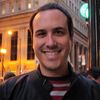On May 20-21, 2012, the NATO summit descended upon Chicago with the full weight of the global military industrial complex. The cloistered glitz of the NATO summit and the publicized gore of the anti-NATO protests left an indelible mark on those who participated in these events. However, for most Chicagoans, NATO simply represented one more annoyance in an already grinding daily commute. In the wake of NATO, Chicagoans sprang back into their daily routine with the ferocity of ants rebuilding a demolished anthill. The NATO summit was, to most, unremarkable.
Now, almost two weeks after the event, police have stowed away their riot gear and cleaned their bloodied batons. Throngs of weary but resolute demonstrators have found their way home to a soft bed and clean clothes. The literal and figurative wounds inflicted in Chicago have begun to heal, but the gnawing issues that gave rise to these demonstrations remain. What have we learned?
4. You were supposed to stay home.
A perfect storm of propaganda to suppress turnout preceded the NATO demonstrations. First, media coverage encouraged the public to stay home. News outlets repeated warnings about potential violence, traffic delays, and police preparation. Chicago radio personalities deployed long-standing stereotypes about demonstrators to cast the protests as socially unacceptable. Even the traditionally benign Roe Conn of WLS-AM 890 incessantly mocked protesters and stoked fear about the upcoming events.
Second, law enforcement created a hostile, militarized environment that intimidated the public. 20 Department of Homeland Security SUVs encircled Daley Plaza. White vans bulging with SWAT teams raced through the streets. Blackhawk helicopters hovered overhead. Officers wearing padded riot gear from head to toe lined the streets. Two futuristic LRAD (Long Range Acoustic Devices) units were positioned on city streets. Trucks with pole-mounted cameras surveilled the public near Buckingham Fountain. All of this, according to Superintendent Garry McCarthy, was simply to protect individuals' first amendment rights. It was clear that these security measures intimidated many and actually curtailed freedom of expression.
Lastly, one day before the summit, a foiled "terrorist plot" was used as the final means to discredit the message of the demonstrations and to suppress attendance. Brian Church, Jared Chase, and Brent Betterly (the NATO 3) are being held on charges of "conspiracy to commit terrorism." Police allege that they were preparing Molotov cocktails to be thrown at targets including Obama's campaign headquarters, Rahm Emanuel's house, police stations and squad cars. Sarah Gelsomino, an attorney for the three men, argues that these individuals are victims of a pattern in which "city and various levels of law enforcement manufacture crimes" ahead of special security events. Attorneys for the defendants claim that undercover officers using the names "Mo" and "Gloves" befriended the activists, devised the plot and furnished the incendiary devices purportedly seized in the raid of the Bridgeport apartment.
The case against the NATO 3 seems flimsy at best. The idea that tech savvy 20-somethings formulated a plot to lob "Molotov cocktails" at Obama's concrete campaign headquarters is laughable. In fact, the scheme seems lifted from the plot of a 1976 Kojak episode. Had prosecutors alleged that these three were using iPads to launch a coordinated cyber-assault on the communication infrastructure of the Chicago police, this story may have been almost believable. Second, some argue that their arrests came in retaliation for posting a video of their traffic stop by Chicago police one week earlier. The widely circulated YouTube video concludes with a man alleged to be a Chicago police officer stating, "We'll come look for you, each and every one of you."
Overall, whether through coincidence or coercion, many people who could have potentially witnessed the demonstrations, and perhaps took part, chose to stay home.
5. The protesters did more than march.
Despite efforts to reduce turnout, thousands of individuals attended a series of fun and successful actions leading up to the NATO summit. Here is a small sampling of the positive and non-violent events:
Students, parents, the Chicago Teacher's Union, the Kenwood Oakland Community Organization and Occupy Chicago held an art celebration to protest the relentless slashing of arts funding to urban schools. Dyett High School on Chicago's South Side has no art teacher and no art program. Occupy activists pointed to a "global agenda of war and austerity" that can raise millions to fund events such as the NATO summit, but "not for mental health clinics and art programs."
Communities United Against Foreclosure and Eviction and Occupy Chicago demanded that Cook County Sheriff Tom Dart institute a one-year moratorium on all "profit-oriented evictions and foreclosures." Demonstrators and victims of foreclosures marched to Daley Plaza where they petitioned Cook County Sheriff Tom Dart.
Members of the Mental Health Movement marched to Rahm Emanuel's home and demanded that the city reopen six shuttered public mental health facilities. They further demanded that other public assets not be handed over to private, for-profit operators in June. The Mental Health Movement has been fighting these closures for years, and on April 12, 2012, nearly 50 individuals locked themselves inside the clinic to protest the closures.
National Nurses United rallied in Daley Plaza for the "Robin Hood Tax." This .5 percent tax on electronic trades would be used to fund health care for low-income individuals. Thousands of nurses rallied in Daley Plaza. They laughed at a "mock" NATO meeting that lampooned world leaders. They cheered for Shen Tong, a Chinese exile who was one of the student demonstrators in Tiananmen Square and who is now an Occupy supporter. They sang along with a rousing concert by Tom Morello, famed guitarist of Rage Against the Machine.
In easily the most moving event of the entire week, 45 veterans of the Iraq and Afghanistan wars returned their medals in a heartfelt ceremony. The ceremony concluded the large anti-NATO march on Sunday, May 20, 2012. The veterans included Scott Olsen, an Iraq War veteran who was injured by a police projectile last fall at an Occupy Oakland event.
